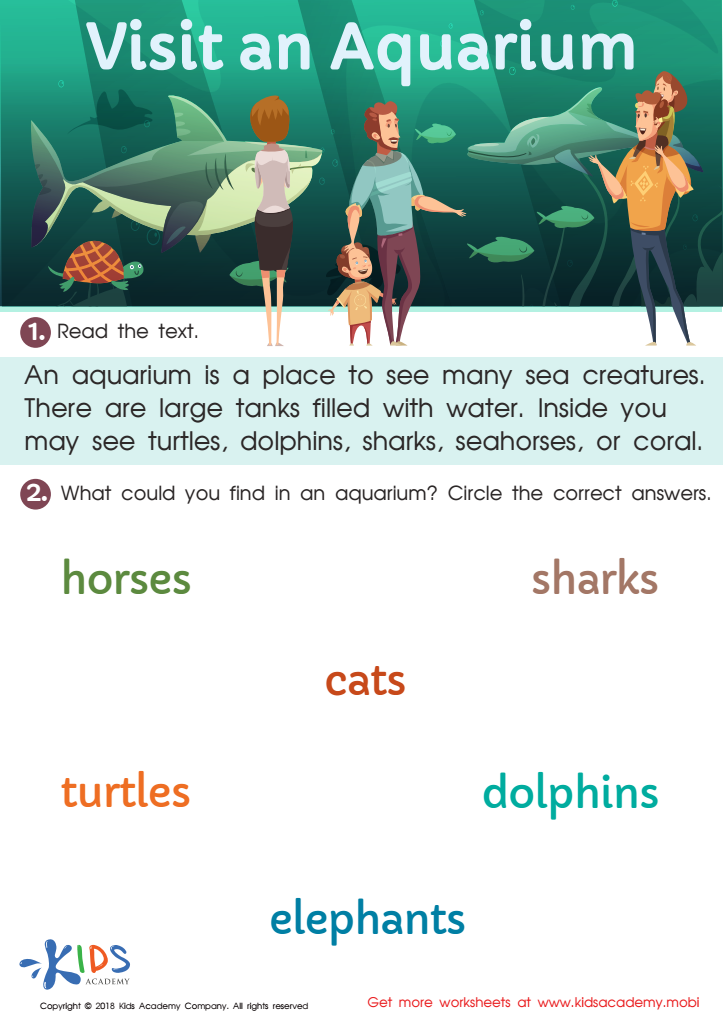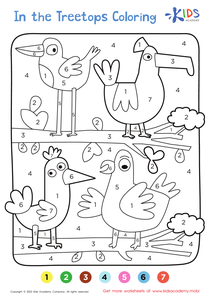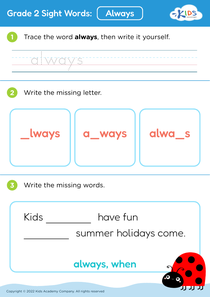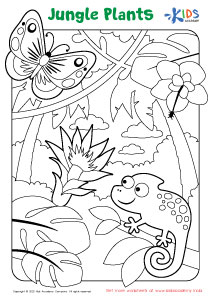Fluency worksheets for Grade 2
6 filtered results
-
From - To
Enhance your Grade 2 students' reading skills with our engaging fluency worksheets! Designed for young learners, these printable resources focus on improving reading speed, accuracy, and expression through fun activities. Our worksheets align with Common Core Standards, featuring various texts to suit different interests and abilities. From echo reading to repeated reading exercises, our materials encourage practice in a supportive and enjoyable way. Equip your second graders with essential tools to boost their confidence and comprehension as they progress in their reading journey. Explore our collection and watch your students flourish into fluent readers today!


What Does It Mean? Worksheet


Visit an Aquarium Worksheet


Starfish: True or False Worksheet


How to Draw a Smiley Face Worksheet


How to Draw House Worksheet


Context Clues and Homophones Worksheet
Fluency is essential for Grade 2 students as it significantly impacts their overall reading proficiency and academic success. At this age, children are transitioning from learning to read to reading to learn, making fluent reading crucial for comprehension. Fluent readers recognize words quickly and accurately, which allows them to focus on understanding the meaning of the text rather than struggling with the mechanics of reading.
Parents and teachers should care about fluency because it not only influences reading achievement but also promotes confidence and motivation in young learners. When children are fluent, they are more likely to enjoy reading, which fosters a lifelong love for literature and learning. Furthermore, fluency skills are foundational for future academic subjects, as students need to be adept readers in content areas like science and social studies.
Additionally, a lack of fluency can lead to frustration and disengagement. By focusing on fluency, parents and teachers can provide targeted support through practice and encouragement, ensuring that students develop these critical skills. Creating a positive reading environment at home and in the classroom cultivates a strong foundation for academic growth and empowers children to succeed in school and beyond.
 Assign to My Students
Assign to My Students















